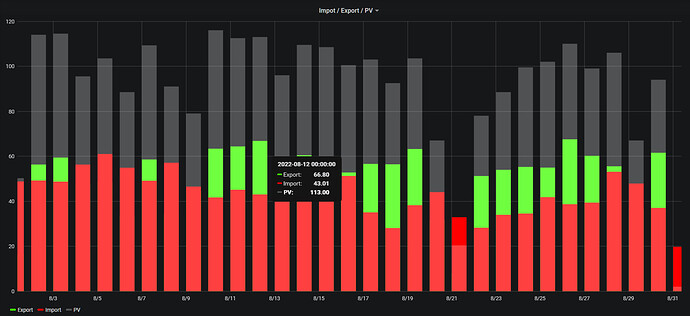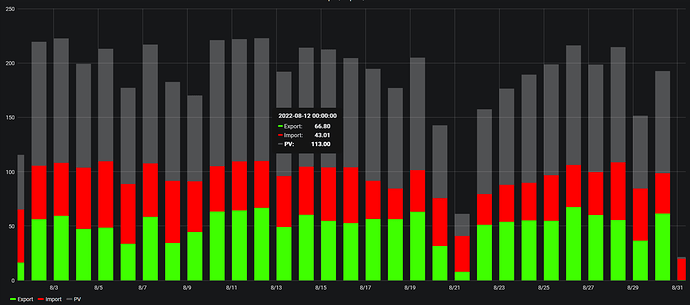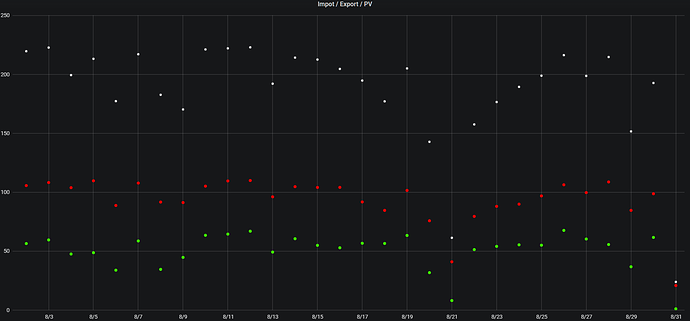If you run Grafana a multi-series barchart can be done easily and quickly.
I gave it a shot to see what’s involved. Took less than five minutes to produce two charts:.
Stacking the values adds only three mouse clicks to the procedure.
Hovering the mouse over a bar in either chart pops up a detail for that bar.
Same data with a line chart:
and again with only points:
As with the bar charts, hovering the mouse pops up the data detail. I used a different method to capture the screens of the 3rd and 4th shots. The legend wasn’t captured along with the rest of the
shot. That’s why it, and the detail pop-up, are missing in those two pics.
Forum user Oleg has created a nice emonCMS/Grafana “interface.”



